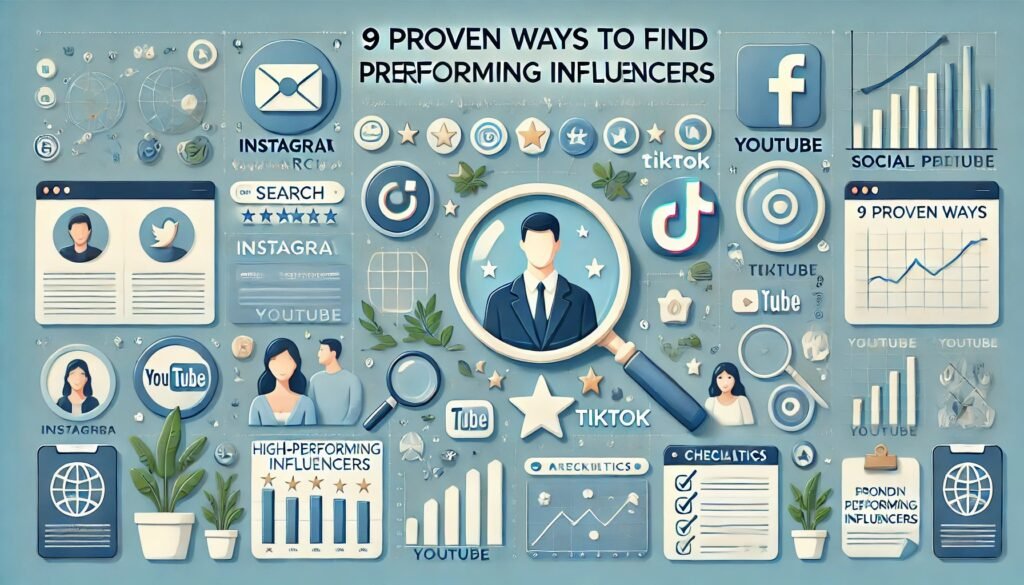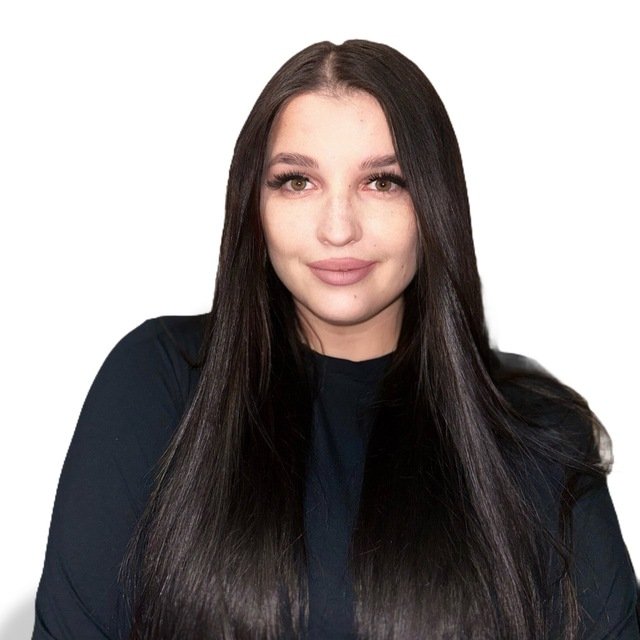
9 Proven Ways to Find Performing Influencers
These days, more and more big-name brands are turning to influencer marketing to promote their products. Take Topicals for example. They ran a unique campaign by hosting an influencer trip to Bermuda, which resulted in 3 million views and 5,000 new followers on TikTok and Instagram. This campaign helped them build an authentic and inclusive community, driving those 3 million views and boosting their social following by 5,000 across TikTok and Instagram.
- 1. What's the right level of fake followers?
- 2. Activity Ratios: Likes, Comments, Shares
- 3. Posting Frequency
- 4. Audience Match
- 5. Comment Analysis & Blogger Communities
- 6. Reels Views
- 7. Does the Influencer Align With Your Brand?
- 8. How Often Does the Blogger Post Ads?
- 9. Expectations From Advertisements
- FAQ
Another case is about Girlactik who hosted a campaign with micro- and mid-tier influencers in Los Angeles. The effect was seen in the collaborations with the influencer accounts between 10K-50K of followers with at least a 3% level of engagement. On the whole, influencer marketing definitely impacted sales together with the uplift of the audience’s engagement. How did we do it? Read more!
But there is one big problem in the field of influencer marketing—the cheating of followers. How can a brand choose the right influencer? What to pay attention to when picking accounts to analyze and not lose in the marketing campaign?
In this article, we will walk through 9 methods of how to detect fake followers and choose real influencers instead.
1. What’s the right level of fake followers?
True to form, to find a blogger’s account that is free from fake followers is pretty much impossible. A blogger can have as much as 15% of fake followers, but it doesn’t matter if these followers engage with the content. If the majority of the audience is active, they will perform the actions you expect.
You can analyze follower manipulation in two ways: through specialized services or manually. Tools like HypeAuditor or Social Blade help detect suspicious profiles.
However, there are certain nuances that only an experienced marketer can spot.

For instance, a blogger with 30,000 subscribers but no post with more than 20 likes is a 100% fake follower case.
2. Activity Ratios: Likes, Comments, Shares
Track the balance between likes, comments, and shares.
Comments can often be analyzed manually, even if a profile is hidden. If the comments are repetitive or come from low-activity accounts, that’s an alarming sign.
Fake comments are often repetitive and come from inactive or low-engagement accounts.
Typically, the number of likes should exceed the number of comments, unless the post is informational in nature, such as guides or tutorials.
The standard ratio for reactions is around 50 comments for every 1,000 likes.
3. Posting Frequency
A blogger’s posting activity is another important indicator. Do they post regularly? Do they use Instagram Reels? Reels are one of the key ways for free promotion on Instagram.
A lack of Reels could be a warning sign. Active bloggers consistently post content and keep their audience engaged on a regular basis.
4. Audience Match
Make sure the influencer’s content aligns with your target audience. For example, if you’re selling sports supplements, but the blogger is focused on fashion and beauty, the audience may not be interested in your offer.
Analyze whether the influencer’s content resonates with your audience’s needs.
5. Comment Analysis & Blogger Communities
Sometimes bloggers join “pods,” where they agree to inflate engagement with each other by liking and commenting on posts. Investigate who comments on the posts and how often.
For example, seeing 100 comments on 100 likes can be a sign of such an “arrangement.” Take a closer look at who’s leaving the comments and how frequently it’s happening.
Not all software can detect such activities, so manual analysis is better here.
6. Reels Views
A minimum of a third of a blogger’s followers should be watching their Reels.
For example, if they have 30,000 followers, each Reel should have at least 10,000 views.
If this is not the case, their followers might be inactive or fake.
7. Does the Influencer Align With Your Brand?
It’s crucial to work with influencers who share your brand’s values. For instance, if a blogger’s posts seem misaligned with your brand, think twice before collaborating.
Just like with our client, Natkina Jewellery. The goal of the campaign was to find influencers in Dubai and Qatar who create authentic content that aligns with the brand’s philosophy—affordable luxury and practical beauty. Not every influencer fit the deep values embedded in the brand’s concept.
We launched a campaign focused on the Middle East, collaborating with micro- and mid-tier influencers with followings between 10,000 and 100,000. The campaign attracted influencers with an engagement rate above 3% and a total reach of over 10,000 people. As a result, the brand not only strengthened its market presence but also increased organic interaction with its target audience. Read more here!

8. How Often Does the Blogger Post Ads?
Check the number of promotional posts. If every other post is an ad, it can decrease the audience’s trust. The ideal balance is one sponsored post for every three regular ones.
This is especially critical in the beauty segment, where competition among influencers is fierce, making it challenging to track the effectiveness of advertising campaigns.
Analyzing sponsored content is another crucial step when evaluating a blogger. If there’s very little advertising in their profile, it could signal that either the influencer only works with large clients who have big budgets, or they’re simply not on the radar of advertisers.
9. Expectations From Advertisements
Take a look at the influencer’s previous advertising campaigns. How many likes, comments, and shares did their sponsored posts receive? This will give you a better idea of what results to expect from your campaign.
Before signing a contract with an influencer, it’s important to assess the results they’ve delivered for other brands. Evaluate the engagement on their sponsored content—look at likes, comments, shares, and overall audience response. This will help you forecast how well your campaign might perform.
Don’t rely on luck—focus on facts and the influencer’s proven track record with other brands.
By following these 9 proven tactics, you can identify authentic influencers, not fake ones, to represent your brand. If you want to minimize risk and find the perfect influencers for long-term partnerships, reach out to us—we’ll help you secure influencers with high ROI!
Our contacts: zlata@inmaar.agency or DM in LinkedIn
FAQ
1. What tools can I use to detect fake followers?
Platforms like HypeAuditor and Social Blade can help identify suspicious activity by analyzing engagement metrics, follower growth patterns, and audience quality.
2. How much engagement should I expect from a micro-influencer?
Typically, a good engagement rate is 3% or higher. This means, for an influencer with 10,000 followers, their posts should get at least 300 interactions (likes, comments, shares).
3. Should I avoid influencers with fake followers?
Not necessarily. Up to 15% fake followers can be acceptable as long as the remaining audience is active and engaged with the influencer’s content.
4. How often should influencers post ads?
A good rule of thumb is one ad for every three organic posts. Too many sponsored posts can reduce audience trust and authenticity.
5. How can I get in touch with your team to find the perfect influencers for my brand?
We’re excited to help you connect with authentic influencers and boost your ROI! Reach out to us directly via: zlata@inmaar.agency or DM in LinkedIn
Recent Posts
-
 Why Video Content is Dominating Beauty Influencer Marketing in 2025March 6, 2025/0 Comments
Why Video Content is Dominating Beauty Influencer Marketing in 2025March 6, 2025/0 Comments -
 Why Micro-Influencers Are the Future of Beauty MarketingFebruary 6, 2025/
Why Micro-Influencers Are the Future of Beauty MarketingFebruary 6, 2025/ -
 Why Influencer Marketing is a Game-Changer for Beauty BrandsDecember 13, 2024/
Why Influencer Marketing is a Game-Changer for Beauty BrandsDecember 13, 2024/

